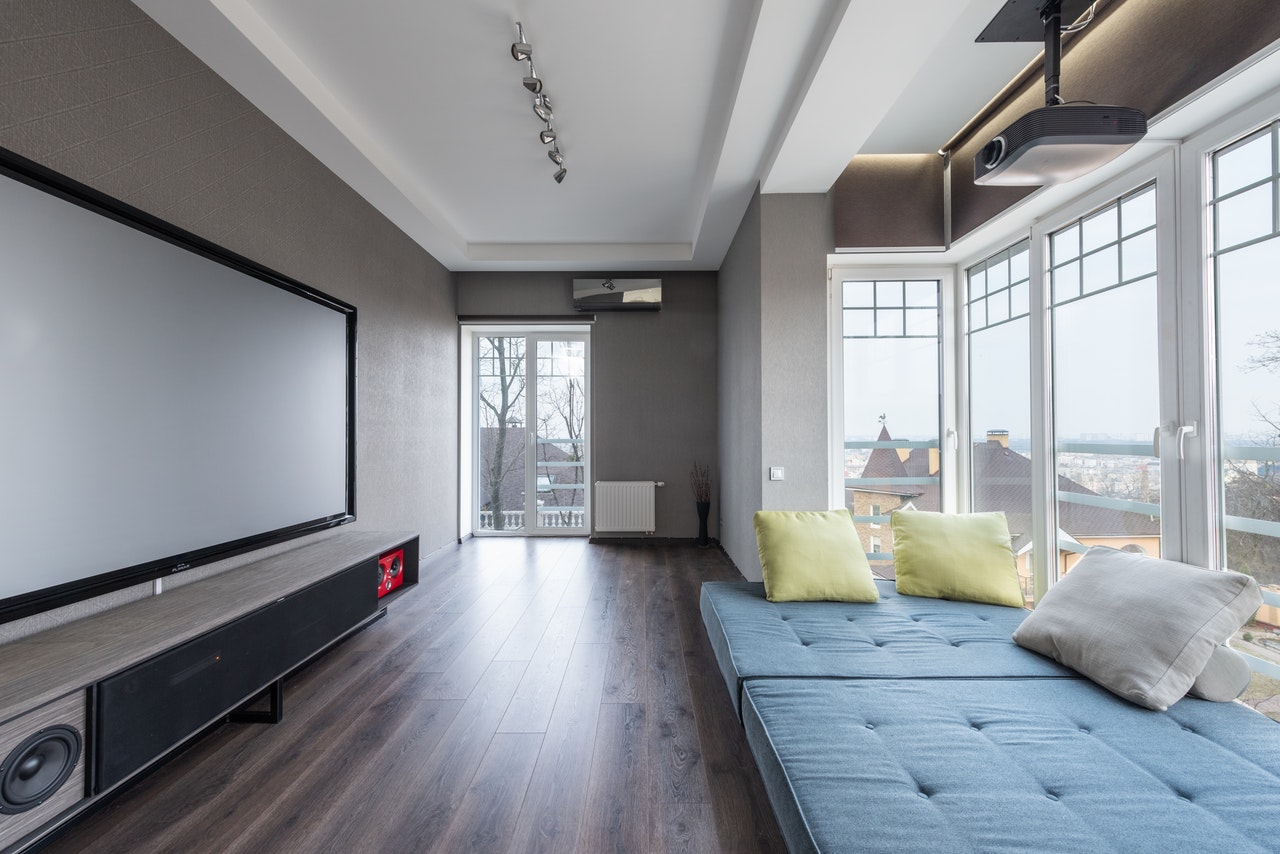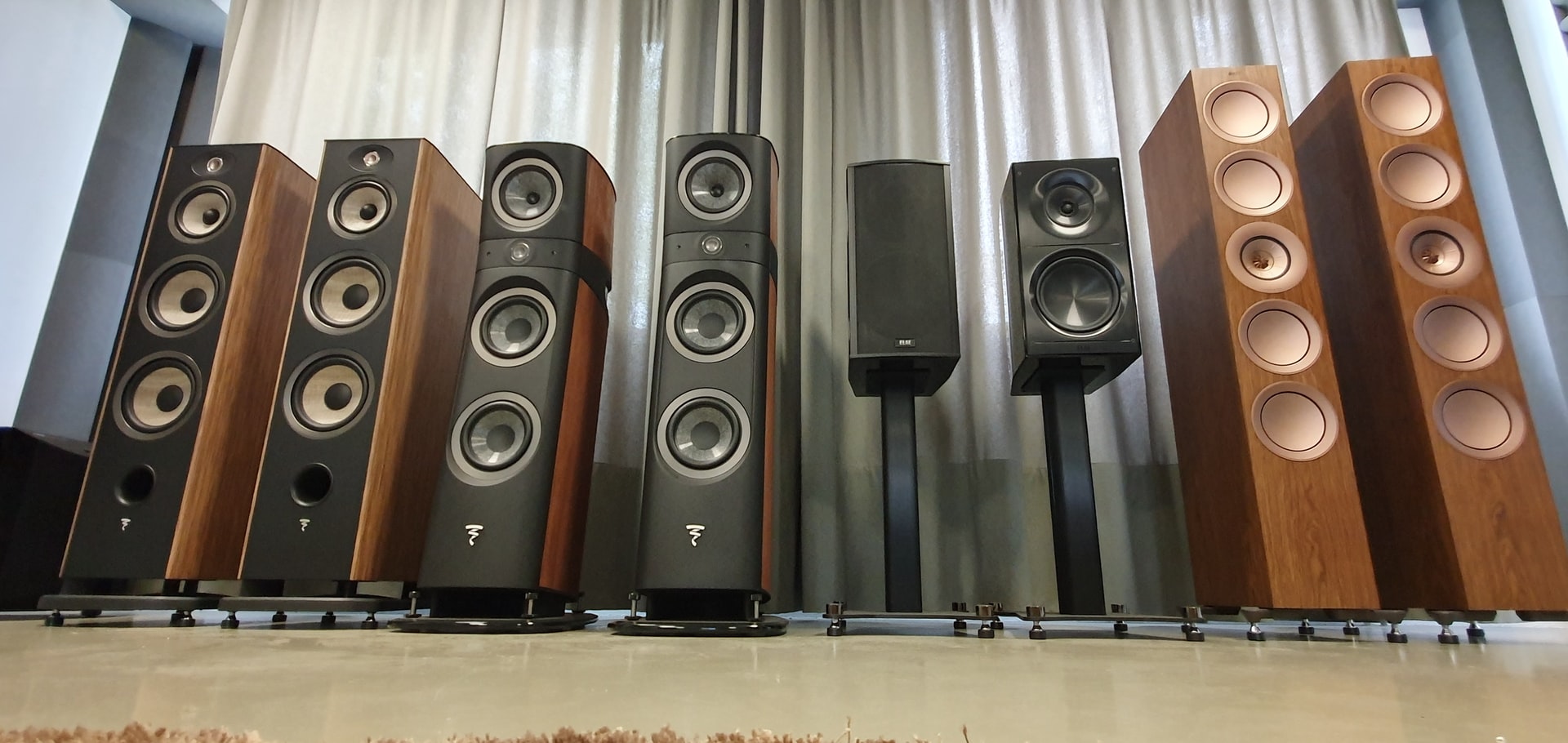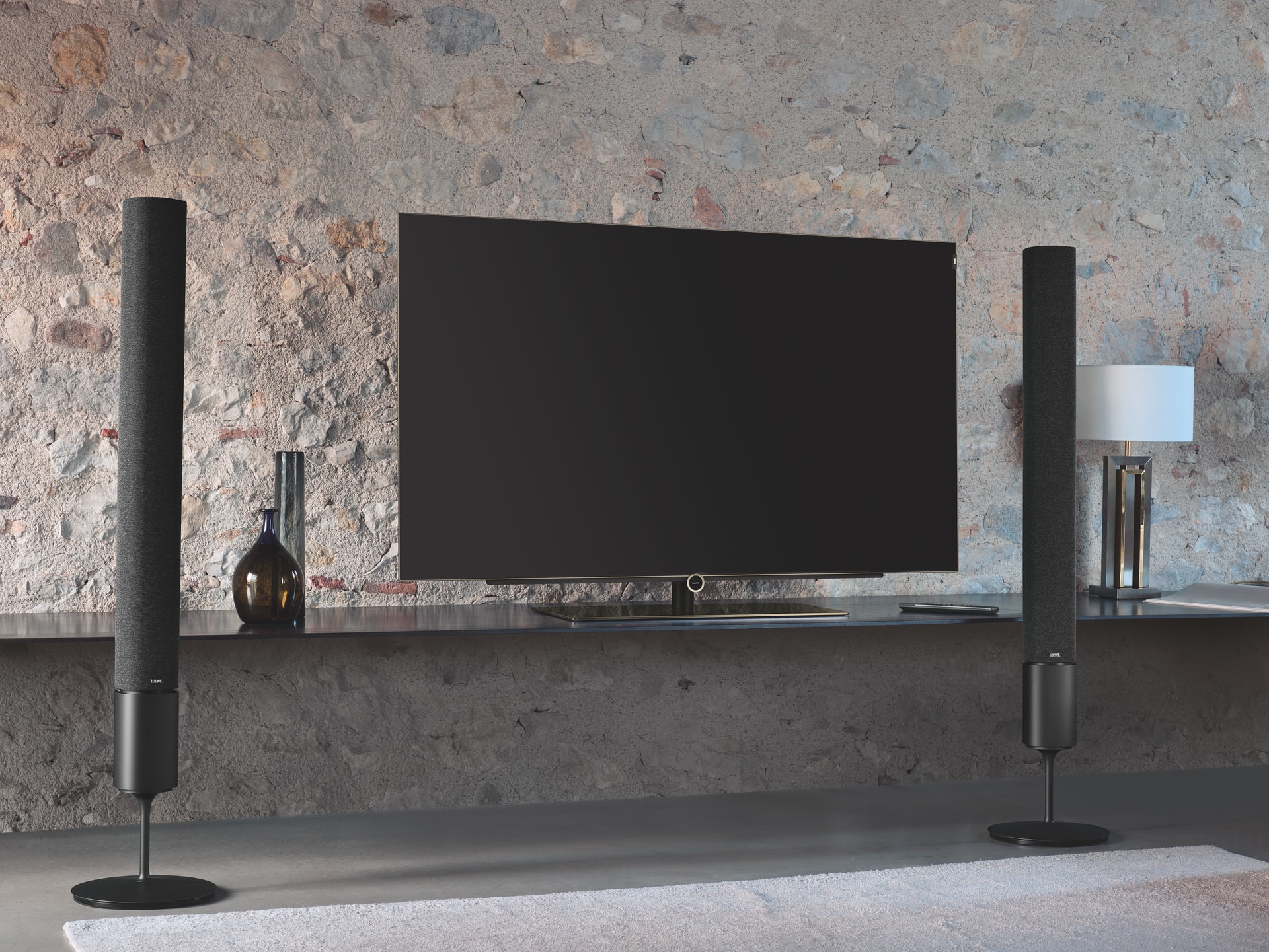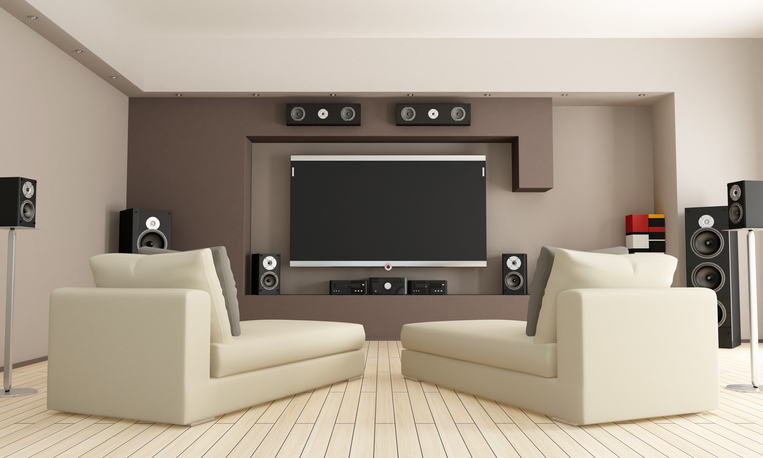If you spend a lot of your free time at home and love to ‘Netflix and chill,’ you might want to install a home entertainment system complete with wireless surround sound and any equipment needed to transform your space into a home theater center. Surround sound systems lend greater depth to your viewing experience. If you entertain family and friends or simply love to immerse yourself in the latest streaming television hits, you’re sure to enjoy the advantages of having a home theater system. Here, we’ll explore surround sound and other equipment needed to turn your family room or den into a theater-worthy setting.
What Is a Surround System?
A surround system provides an audio experience that seems to captivate listeners. Typically, surround systems feature speakers in each corner of the room (plus an additional one) so that viewers or music listeners are literally surrounded by sound. Today’s wireless surround sound systems project high-quality digital sound that is reminiscent of a theater experience. The system produces a dynamic soundscape that is at once multi-dimensional and rich.
What Are the Benefits of a Home Surround System?

In addition to its enhanced sound quality, a home surround system is customizable. It allows you to adjust the sound to suit your preferences. For instance, you can customize the system’s treble and bass. When you have a home sound system, you’ll find that it’s an ideal entertainment feature for guests. Whether you’re hosting a Sports party or a home movie night, the system is set up for a more exciting entertainment experience.
What Equipment Do You Need for Your Surround System?
Today, there are many different sound systems and related equipment to choose from for your home entertainment center. However, there are some general components that most home sound systems share:

Center Speaker
The center speaker is typically the largest speaker of a sound system as well as the most versatile. It contains more speaker cones than the smaller, satellite speakers. Also, the center speaker features the most prominent sounds like dialog.
Subwoofer
The subwoofer speaker is designed for low-frequency and bass sounds. It relies on air pressure to produce its deep base audio. Generally, the subwoofer is situated on the floor, usually in a corner or next to the media center.
Satellite Speakers
In standard home sound systems, there is a 5.1 configuration. That means that there is one central speaker and four satellite speakers, usually each mounted in the room’s corners. Sometimes, people might opt for a fifth satellite speaker depending on the size of the space.
Audio Receiver
The audio receiver allows you to adjust your soundscape. Some people control the sounds from their PC using a mixer. Others might use an equalizer to make sound adjustments.
Internet and Wireless Router
Today, digital sound systems rely largely on wireless functionality, making installation easier than in past decades. High-speed internet and a wireless router complete your home theater equipment needs. You’ll be able to stream films and shows and enjoy their audio as if you were viewing in a theater.
Types of Home Theater Systems
If you’re investing in a home theater system today, you’ll want to decide between an all-inclusive package (aka home theater in a box) or purchasing components separately. If you have a large space, it may be worthwhile to opt for separate components. However, if you’re not a technical person and you’re revamping a spare room into your home theater, a package deal may serve your needs perfectly.
You’ll also need to decide if you want to go wireless with your sound system. While wireless is a popular option today, wired systems remain reliable. However, the benefits of wireless mean that you don’t have to drill holes in your walls to run wire. It’s a clean installation, which many homeowners find preferable to more traditional systems.
Choosing a Display
If you’re going for a full-blown cinema experience, you may want to purchase a large screen and projector for your entertainment system. However, today’s flatscreen televisions make excellent viewing screens too. You’ll simply need to decide what works best for you and the space. You can also opt for motorized screens that hide away when not in use. Some people opt for draperies to cover their large home theater screens, just like at the cinema.
Set-Up Considerations
Setting up your home theater system should be done in the context of your space. In most cases, the setup will feature two satellite speakers in the front of the room and two in the back, each mounted in a corner. First, design where you want to situate your television or projector and screen. Then, you can assign positions for your sound system. Be sure that your audio receiver is located in an easily accessible spot so you can make sound adjustments as needed.
Where Are the Best Places to Create a Home Entertainment Center?
Many homeowners prefer to transform their den or family room into their home theater space. However, if you have a finished basement, you may wish to create a recreational setting there that includes your home theater. Basements usually offer an expansive space that’s ideal for adding comfortable, theater-style seating or oversized sectionals, a home bar, and even a popcorn cart.
Home theater installation companies have even created digital entertainment centers in sunrooms, living rooms, spare bedrooms, and even in outbuildings. Where you set up your system is entirely up to you.
Wiring Tips

If you choose to install a wire system, you’ll need to consider how to hide drilled holes in your walls. Using a professional install will make sure not to detract from the aesthetic appeal of your space. You can also decide if you want to mount your speakers inside of the walls or on the outside. Mounting speakers inside the wall is more costly, but it’s also more aesthetically pleasing.
Make the Most of Your Entertainment Setup

Movies aren’t the only thing to enjoy in your home theater space. You can actually involve all of your tech toys in the room. For instance, include your gaming systems and music players. The surround sound is ideal for listening to music or immersing yourself in an action video game. You will want to give thought to your furnishings, however. A conventional television console might not accommodate all of your equipment. There are larger consoles available for housing multiple tech gears. Some people also devote a room closet to house all of their technology gear, including the internet router.
Getting Comfortable

A home theater and sound system require much attention to technology, but that’s not the only aspect of a great space for watching movies and television. You also want to be able to relax in comfort while watching a movie. Theater-style seating isn’t actually comfortable for many moviegoers. You’ll have lots of seating options to consider for your entertainment space. Consider reclining sofas or conventional sofas. Sectional seating allows you to change seating configurations easily. If you have kids, you might even include some child-size seats just for them.
In addition, consider how to decorate the space. Be sure that you have light-blocking window treatments so that you can create a true theater experience and prevent lighting glares from affecting the view of your screen. Floor covering is an important consideration. Carpeting will absorb sound, and some flooring choices might cause sound to reverberate.
The rest of the decor is up to you. You can decorate with your favorite film posters mounted in frames. Or, you can leave your family room decor as-is—filled with your creature comforts. You might want to add some fun features to the room, such as a home bar, small refrigerator, a popcorn maker and cart, and plenty of throw blankets and pillows for added comfort.
Should I Hire Professional Home Theater Installers?

Hiring professional contractors to set up your home theater might be the best option if you’re inexperienced at setting up technology gear. Theater installers will check the room’s acoustics and ensure that your system is set up for the best audio results. On the other hand, if you opt for a theater in a package model, you may have little trouble setting up your system. You can also find many resources online, such as tutorials that will help you install your home theater, but we always recommend getting help from a professional.
A home theater system, especially an elaborate one, is an investment in your home entertainment. However, extensive systems may even add value to your home. Take your time to research the different home theater options and components so that you can choose the ideal items for your home and budget.




